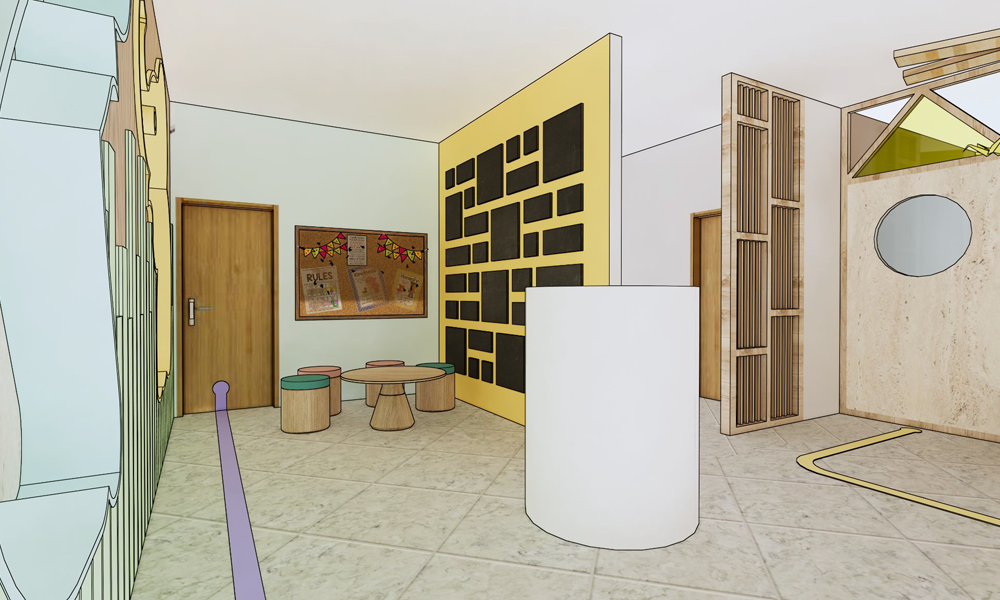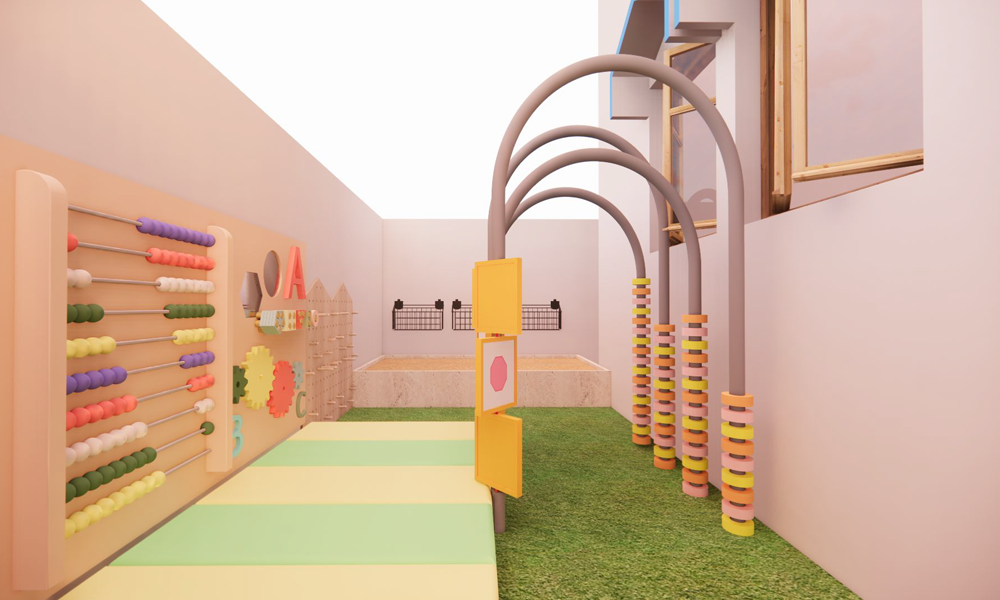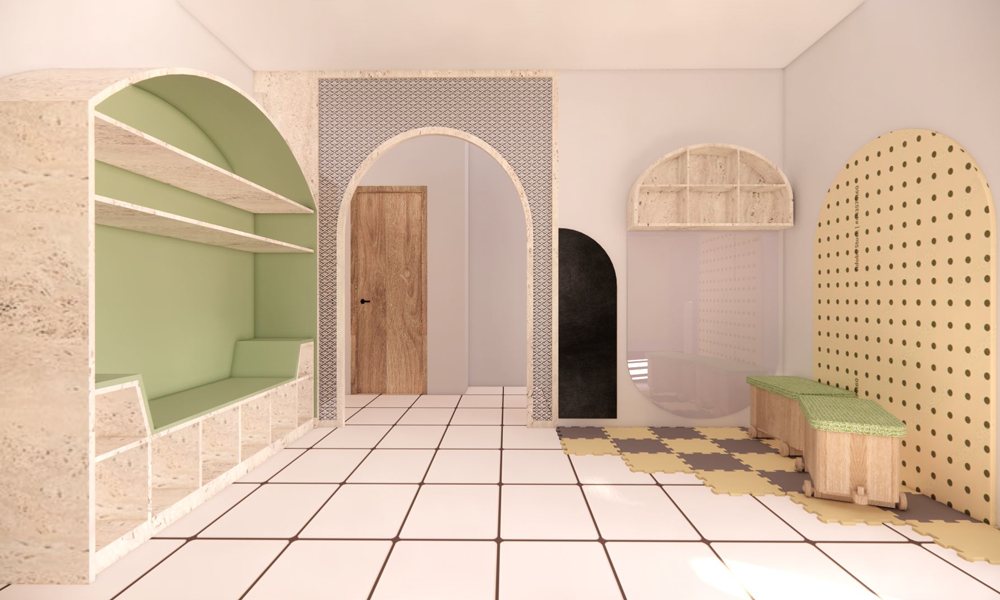School is the most important influencing factor after a child’s home. A young child often spends anywhere between 4-8 hours, 5 days a week for several years !
The design of the school space is hence of utmost importance.
At the tender age, where the mind absorbs all that is around him, a space that is designed for a child, allows for the most optimized experience in a learning environment – safe and enriching.
In a classroom design, there are several important factors to consider:
- Layout :
The classroom should allow for free movement of the child and teachers. The movement and circulation within the space may be designed to create a certain defined path. Ease of access to student storage, clear visibility to the blackboard or teaching screen, flexibility of furniture layout are some of the important features of the classroom design. - Colors :
Colors are a very strong influencing factor for the emotional well-being of the child. It is also a very useful tool to increase concentration and focus in a space. A well designed distribution of color on the walls and ceiling can also change the apparent scale in a room. Certain colors like yellow, orange are suitable for spaces of high activity. Shades of blue are often used in soft spaces used for sleeping areas for toddlers. As a backdrop , the walls, ceiling and floor should be in light muted colors, or a combination of 1-2 colors. The furniture should ideally be light colors with small coloured highlights at the most. The play and learning equipment is often designed to have certain colors based on the age and activity.

- Furniture :
The amount of furniture and the design of classroom furniture is of utmost importance in a classroom design. The importance of ergonomics of the school furniture cannot be stressed enough. The posture, and comfort of a child for writing, reading, and focusing on a task is all directly influenced by the comfort of the furniture he is using. It goes without saying that school furniture needs to be of high quality and durability. An optimized weight which allows for stability, yet can be moved around as required is crucial for ease of usage. Well rounded corners and edges, non toxic finishes are a given in every product designed for a child and for all the classroom furniture too. Storage which allows for independent usage is ideal for learning aids and cubbies. Certain storage should also be designed to be covered and used by teachers only. - Scale :
The scale of the space is important as an architectural decision, but can also be played around within the interior design of the classroom space. The layout , the colors are all tools to create scale within the classroom space. In addition, the right ergonomics used for the classroom furniture also ensures the correct scale in the space.

- Space optimization :
In a space where several children are using the classroom at the same time, design allows for a variety of activities to happen simultaneously without disturbing each other. The walls, the furniture can all allow for little pockets of activities to be created as required in smaller groups. At the same time, when required, the classroom space allows for all children to work towards a common learning goal. - Safety:
Safety is a key feature with designing for children. The use of non toxic materials, safe soft corners and edges is an important point to keep in consideration for all classroom design.
The design of a classroom includes several different factors which are site specific, specific to a school ideology and often a vision of learning that embodies a school’s philosophy. Hence each classroom design is a unique project and brings on a different opportunity to innovate and design.

The key factors create the underlying principle in every interior design of a classroom. Over and beyond these, each classroom is a fresh new canvas, waiting for the designer’s brushes to transform it into a magical environment of learning, growth and support for our little ones, who are the future of our world!


